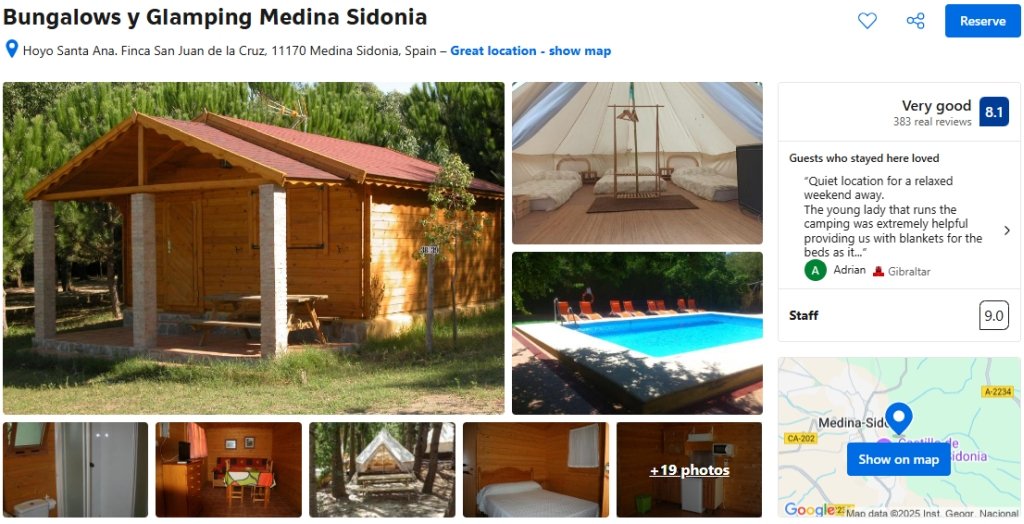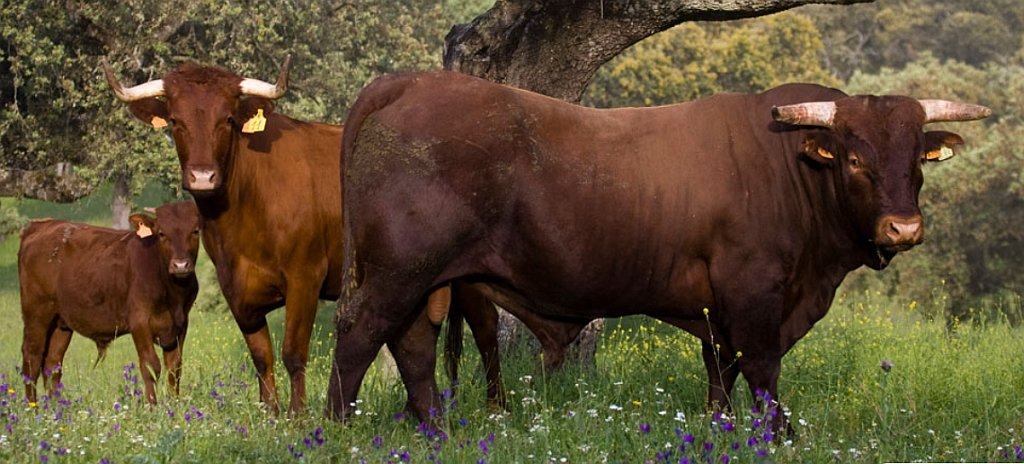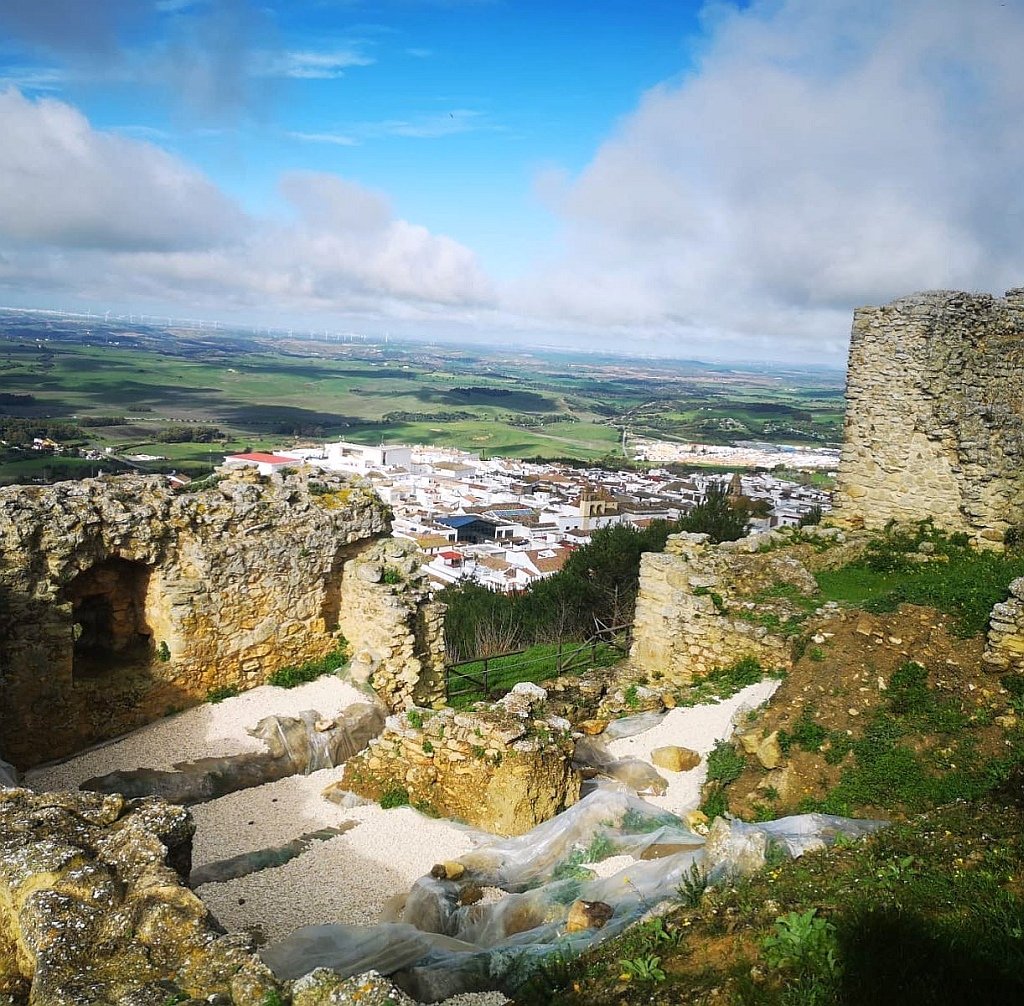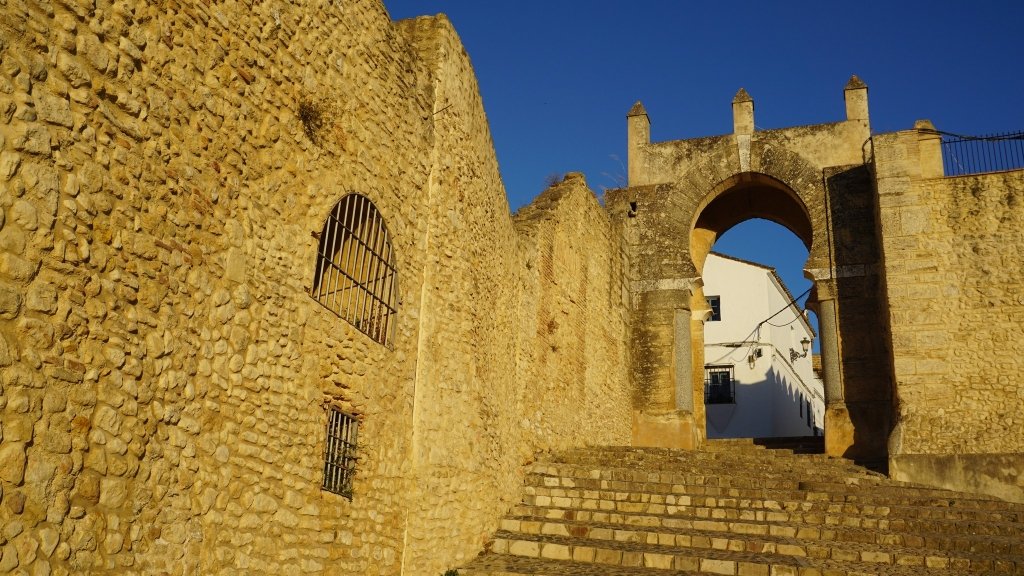A Town Steeped in History
Medina Sidonia is one of Spain’s oldest towns, with a history that dates back to the late Neolithic period. Over the centuries, it has been home to various civilizations, each leaving their mark on the town’s archaeological sites.
The Phoenicians were the first to arrive by sea from the East, followed by the Romans, who contributed significantly to Medina’s development. Later, the Visigoths, Byzantines, Muslims, and eventually the Christians shaped the town’s rich cultural and historical heritage.
Find a hotel in Medina Sidonia
Medina Sidonia offers a variety of accommodation options, ranging from historic hotels to cozy guesthouses and modern self-catering apartments. For those seeking a stay with character, Hotel Tugasa Casa Palacio Medina Sidonia is a standout choice. Housed in an 18th-century manor, this hotel combines historic charm with modern comforts, offering stunning views over the Cádiz province.
For a more intimate and personal experience, Posada Alegria and Casa Rural Sidonia provide warm hospitality in central locations. Both options are well-rated for their welcoming atmosphere and comfortable amenities. TRIPERIA 25 is another excellent choice, featuring stylish accommodations with amenities that ensure a relaxing stay.
If you prefer self-catering, Apartamentos La Casa de la Alameda offers well-equipped apartments with access to a solarium, perfect for soaking up the Andalusian sun. Similarly, Casa La Muralla provides private patios and an outdoor swimming pool, ideal for those seeking privacy with added leisure facilities.
Families and nature lovers might enjoy Hotel La Villoría, a peaceful retreat with family-friendly amenities, or Bungalows y Glamping Medina Sidonia, which offers a unique stay blending modern comforts with a touch of adventure. Many accommodations in the town also provide conveniences such as free parking and swimming pools, making for a stress-free visit.

Whether you’re looking for a boutique hotel, a rustic guesthouse, or a self-catering stay, Medina Sidonia has options to suit different tastes and budgets, ensuring a comfortable and memorable visit.
Listen to the podcast about Medina Sidonia
Mike and Sarah chat about this article and Medina Sidonia on the podcast “Discovering Spain, Wildlife, Culture and Travel Insights.”
Exploring Medina Sidonia
The town is divided into three main urban centers: Medina Sidonia, San José de Malcocinado, and Los Badalejos, which are further divided into 13 neighborhoods. Visitors can explore various tourist routes, including:

- The Bull Route: Showcasing the famous Retinta cattle breed, known for its high-quality meat. This route extends from Jerez to Tarifa, passing through towns like San José del Valle, Jimena de la Frontera, San Roque, and Los Barrios.
- The Gastronomic Route: A culinary journey featuring traditional dishes such as game meat, stews, rabbit, snails (caracoles), wild thistle (tagarninas), and goat stew (cabrillas). However, the town’s sweets steal the spotlight with treats like amarguillos (almond cookies), tortas pardas (pastries filled with sweet pumpkin), yemas (egg yolk sweets), polvorones (Spanish shortbread), piñonates (honey and almond confections), and the traditional alfajor (spiced almond and honey cake), a recipe passed down through generations.
- The Historical Routes: These include the Roman Route, the Almoravid and Almohad Route, the Castle Route, the Wine Route, and the Gothic-Mudejar Route.

Getting to Medina Sidonia
The town is accessible via three main routes:
- North Access (A-389): Connects to the Jerez-Los Barrios Highway (A-381).
- South Access (A-203): Links to the A-396 road and provides access to Benalup-Casas Viejas.
- West Access (CA-202): Connects to the A-390 road leading to Chiclana de la Frontera and the Costa de la Luz Highway (A-48).
The nearest train stations are San Fernando – Bahía Sur (20 minutes away) and Jerez (30 minutes away).
Promo video from the Medina Sidonia tourist board. Medina Sidonia History, Culture, and Traditions.
You can see the official tourist information website for Medina Sidonia here: https://www.turismomedinasidonia.es/
The Old Town: A Historical Treasure
Declared a Historic-Artistic Site and a Site of Cultural Interest in 2001, Medina Sidonia has a history spanning over 3,000 years. Walking through its streets is like traveling through time, from the Bronze Age settlements to the modern-day town.
Some of the most notable landmarks include:
- Cerro del Castillo: Home to ancient fortifications, including remnants of a Roman castellum and an Arab alcázar, later transformed into a medieval castle.
- The Arches of Medina Sidonia:
- Arco de la Pastora (10th century) – A prime example of Muslim architecture, once an entrance to the walled city.
- Arco de Belén (13th century) – Named after the altar housing an image of the Virgin Mary.
- Santa María la Mayor la Coronada Church (16th-17th century): A Gothic-Renaissance masterpiece with a 15-meter-high Plateresque altarpiece and a striking Rococo-style altar.
- Town Hall (17th century): A mix of Baroque, Neoclassical, and 19th-century architectural styles.
- The Duke’s Stables (18th century): Once a royal garrison, later used as a comedy theater and now an exhibition hall.

A Rich and Complex History
The town’s history can be traced back to the Bronze Age, with archaeological finds suggesting a connection to the Tartessian culture. The Phoenicians founded a settlement here, naming it after their city of Sidon.

Under Roman rule in the 1st century BC, the town became Asido Caesarina Augusta, a colony with full Roman rights. During the Visigothic era, it served as a provincial capital and an episcopal seat.
In 712 AD, the Muslims established it as the capital of the Cora de Sidonia. Alfonso X the Wise reconquered the town in 1264, and it later became a strategic location for military orders like the Order of Santiago and the Order of Santa María.
Climate
Medina Sidonia enjoys a mild climate with about 300 sunny days per year and an annual average temperature of 18°C. Summer temperatures reach an average of 31.4°C, sometimes exceeding 40°C, while winter temperatures average around 7.1°C. The town receives approximately 794 mm of annual rainfall.
Monuments and Sites
Medina Sidonia is rich in historical and architectural heritage, including:
- Roman Road (1st century): Discovered in 1997, featuring stone-paved sidewalks and a 5-meter-wide roadway.
- Roman Water Conduits and Sewer System (1st century): A sophisticated underground system made of stone and mortar, designed for sanitation and drainage.
- The Fortress of Torre Estrella: A former Arab stronghold later modified by the Christians.
- Casa de los Enrile (18th century): A grand manor house with a carved stone entrance and columned courtyard.
- Ermita de los Santos Mártires (7th century): Built over a Roman villa, featuring Roman and Visigothic columns and an impressive Mudéjar-style ceiling.
Festivals and Events
Medina Sidonia hosts various traditional festivities throughout the year, offering visitors a glimpse into the town’s vibrant cultural heritage.
- Christmas Celebrations (December): The town comes alive with festive decorations, nativity scenes, and holiday markets. A highlight is the live nativity scene in the historic center, where locals reenact biblical events, creating a magical and immersive experience for visitors.
- Three Kings Parade (January): This lively procession marks the arrival of the Three Wise Men, who distribute sweets and small gifts to children along the streets. The parade features elaborate floats, music, and a joyful atmosphere that brings families together to celebrate the Epiphany.
- Feast of the Patron Saint (January): Dedicated to Saint Sebastián, the town’s patron, this religious festival includes a solemn mass, processions, and local festivities. Residents honor the saint with traditional songs, food, and community gatherings.
- Carnival (February-March): One of the most colorful celebrations in Medina Sidonia, the carnival is known for its satirical parades, lively music, and elaborate costumes. The event includes chirigotas (humorous singing groups) that perform witty, topical songs, making it a highlight of the town’s cultural calendar.
- Holy Week (April): A deeply spiritual and visually striking event, Holy Week features solemn processions of religious brotherhoods carrying ornate pasos (floats) depicting biblical scenes. The sound of marching drums and religious chants fills the air as the processions wind through the town’s historic streets.
- Fair and Festivities (June): Originally established as a cattle market in 1842, this fair has evolved into a major celebration featuring the Equisidonia and Bovisidonia livestock fairs. Visitors can enjoy equestrian shows, traditional flamenco music, fairground rides, and Andalusian gastronomy.
Experience Medina Sidonia
Medina Sidonia is a town where history, culture, and gastronomy come together. Whether you’re exploring ancient ruins, savoring traditional sweets, or strolling through medieval streets, this Andalusian town offers a rich and unforgettable experience for every visitor.
Ronda Today
Everything you need to know before you visit Ronda “The city of dreams” in Andalucia. https://www.rondatoday.com/
Visit Cádiz
Planning on visiting Cádiz? Tourist information. Monuments. Hotels. Activities. City guides: https://visitingcadiz.com/
The Caminito del Rey
Discover everything you need to know about El Caminito del Rey, Malaga including history, facts, how to get there and the best time to visit. Find tickets for the Caminito del Rey
Wildside Holidays
Take a trip on the Wildside! Discover the wildlife and nature of Spain, its Natural and National Parks and find the top wildlife, activity and walking holiday companies.
Iberia Nature Forum
Struggling with identifying those bugs and beasties? Why not check out the Iberia nature Forum! https://iberianatureforum.com/
I’ve been living in this lovely area of Western Andalucia for the last 20 years or so and dedicate most of my time to the running of English language tourist information websites for the towns of Cádiz, Ronda, Grazalema, the famous or infamous Caminito del Rey, and also Wildside Holidays, which promotes sustainable and eco-friendly businesses running wildlife and walking holidays in Spain. My articles contain affiliate links that will help you reserve a hotel, bus, train or activity in the area. You don’t pay more, but by using them you do support this website. Thankyou!

